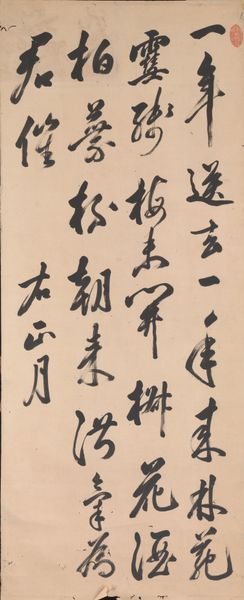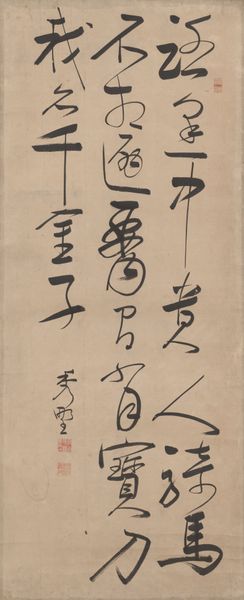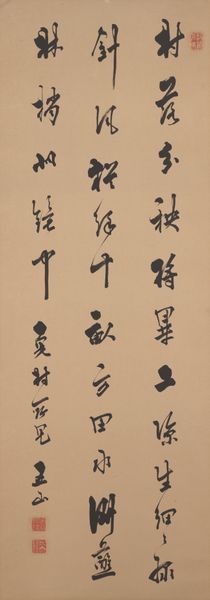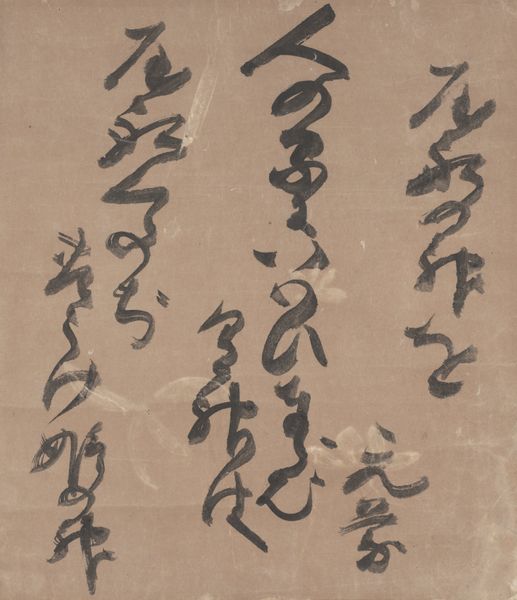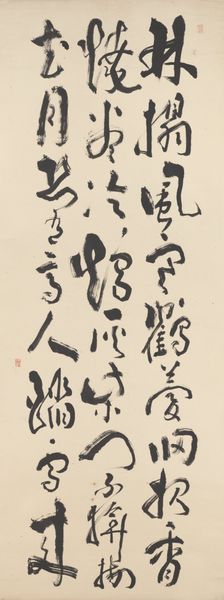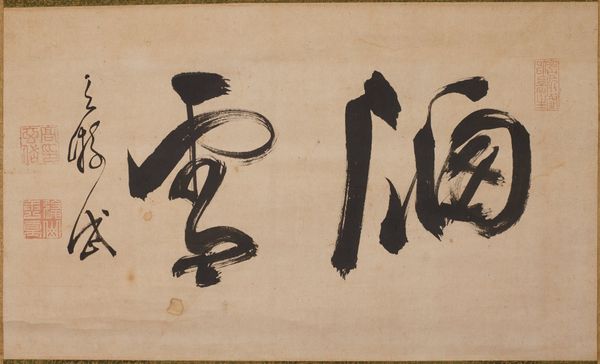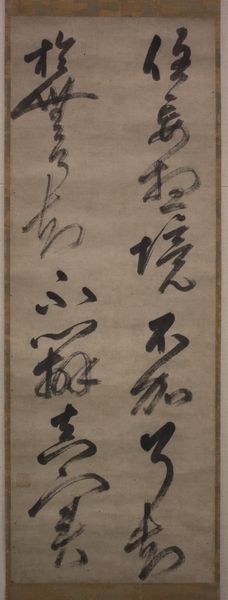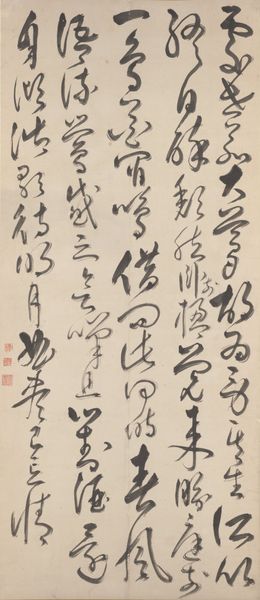
paper, ink
#
asian-art
#
paper
#
ink
#
calligraphic
#
calligraphy
Dimensions: 53 11/16 × 21 1/2 in. (136.37 × 54.61 cm) (image)73 3/16 × 24 5/8 in. (185.9 × 62.55 cm) (mount, without roller)
Copyright: Public Domain
Editor: Here we have “Threads of Gold” by Kōno Tettō, dating from around the mid-19th century. It’s ink on paper, a hanging scroll. The brushstrokes give it an energy that is amazing! It seems to me the writing takes precedence over easy interpretation; what are your impressions of the piece? Curator: Ah, yes, it breathes, doesn’t it? Like a conversation unfolding, rather than a statement declared. Tettō’s calligraphy becomes an extension of his very being, the ink a conduit to his soul, you might say. See how the characters dance on the page, sometimes bold, sometimes delicate? It is an echo of his inner world rendered visible. Do you find any particular element grounding the entire experience? Editor: I notice how some of the lines almost connect separate clusters of characters – there’s a flow! So, it's not just about individual characters, but the spaces in between? Curator: Precisely. Those in-between spaces, the ‘Ma,’ as the Japanese call it, are as vital as the strokes themselves. It's the silence that gives the sound meaning. Think of a garden where the rocks are arranged to guide the eye, to create vistas not explicitly there. This ‘Threads of Gold’... for me it whispers secrets of balance. Editor: That makes perfect sense! I was so caught up in trying to decipher each stroke, that I almost overlooked that I should not necessarily read it literally, and also "feel" it in an emotional way. Curator: Sometimes, we're too busy searching for the answer that we miss the poetry in the question. Art, after all, is as much about feeling as it is about understanding.
Comments
minneapolisinstituteofart almost 2 years ago
⋮
Kōno Tettō studied Chinese poetry under the prominent poet Yanagawa Seigan (1782–1858). Later, Tettō opened a school and published two volumes of his work, before dying at forty-three years of age. His verse celebrating nature, appearing on this scroll, remains well-known today. Tettō’s forceful style of writing, characterized by angular thrusts, thick, blunt-tipped horizontal strokes, and thin vertical strokes, recalls that of his teacher, and seems somewhat at odds with this lyrical poem. 山猿雪猶寒 春風来 / 水国 浴促待柳條 一 / 一黄金幺In the distant mountains the snow is still cold; / The spring wind arrives from the lake country. / It bathes and stimulates the pines and willows, / To create, one by one, threads of gold.(Trans. Stephen Addiss)
Join the conversation
Join millions of artists and users on Artera today and experience the ultimate creative platform.


